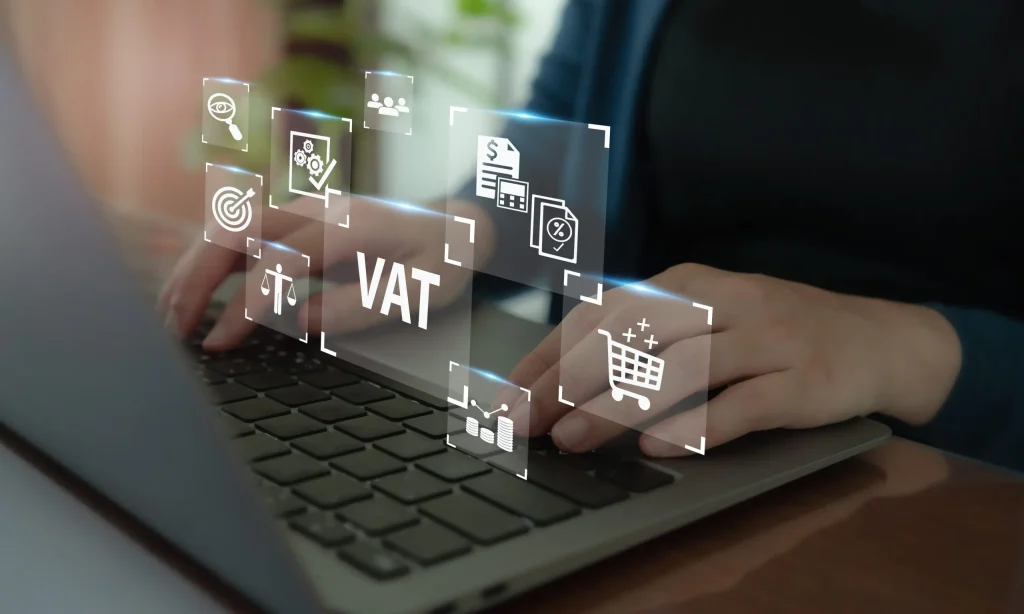VAT (Value Added Tax) is a tax added to most products and services sold by VAT-registered businesses.
Businesses have to register for VAT if their VAT taxable turnover is more than £90,000. They can also choose to register if their turnover is less than £90,000.
Your responsibilities as a VAT-registered business
As a VAT-registered business you must:
• include VAT in the price of all goods and services at the correct rate
• keep records of how much VAT you pay for things you buy for your business
• account for VAT on any goods you import into the UK
• report the amount of VAT you charged your customers and the amount of VAT you paid to other businesses by sending a VAT return to HM Revenue and Customs (HMRC) – usually every 3 months
• pay any VAT you owe to HMRC
• The VAT you pay is usually the difference between any VAT you’ve paid to other businesses, and the VAT you’ve charged your customers.
If you’ve charged more VAT than you’ve paid, you must pay the difference to HMRC.
If you’ve paid more VAT than you’ve charged, HMRC will usually repay you the difference.
You can appoint us an agent to deal with HMRC on your behalf if you prefer.
There are VAT schemes you can join that affect how you calculate and report the VAT you owe HMRC

VAT schemes are designed to simplify the way some VAT-registered businesses calculate and account for VAT to HMRC.
They do not change the amount of VAT businesses charge for their products and services. They are voluntary to join.
The VAT Flat Rate Scheme lets you work out what you owe HMRC in VAT as a percentage of your gross turnover.
You can only use this scheme if you’re a small business with an annual taxable turnover of £150,000 or less excluding VAT.
The amount of VAT you pay depends on your industry and type of business.
There are other VAT schemes you may be able to join depending on your VAT taxable turnover and type of business.
If your annual VAT taxable turnover is £1.35 million or less, you may be eligible for the:

There are 3 different rates of VAT that can be added to products. Which one applies depends on the goods and services, and how they’re used.
Most goods and services are charged at the standard rate of 20%. You should charge this rate unless the goods or services are classed as reduced or zero-rated. Get a list of reduced or zero-rated goods and services.
You need to register for VAT if you go over the registration threshold (or expect to). There are also thresholds for using some VAT accounting schemes. Use your taxable turnover to work out if you’re over a threshold. This is the total value of everything you sell or supply that is not exempt.
Circumstance Threshold What to do
Total taxable turnover More than £90,000 Register for VAT
Bringing goods into Northern Ireland from the EU (‘acquisitions’)
More than £90,000 Register for VAT
Selling goods from Northern Ireland to consumers in the EU (‘distance selling’) Total sales across the EU over £8,818 Register for VAT in EU countries
VAT accounting scheme thresholds
Scheme Threshold to join scheme Threshold to leave scheme
Flat Rate Scheme
£150,000 or less More than £230,000
Cash Accounting Scheme
£1.35 million or less More than £1.6 million
Annual Accounting Scheme
£1.35 million or less More than £1.6 million
There are different thresholds for other schemes like the VAT retail schemes.
©2025 Moxham Quinn All Rights Reserved.